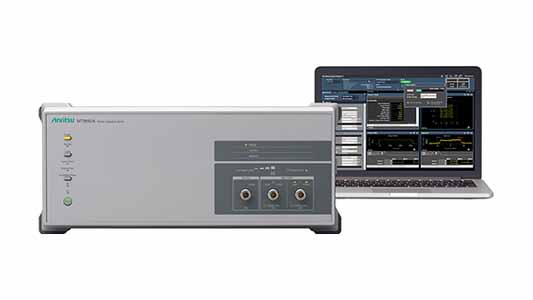Anritsu and ASUS have announced a partnership to validate the latest wireless communications standard, IEEE 802.11be (Wi-Fi 7) 320 MHz performance testing. This series of tests utilized the Anritsu Wireless Connectivity Test Set (WLAN Tester) MT8862A in Network Mode and in the ASUS ROG Phone 8 series smartphones.
The IEEE 802.11be standard incorporates innovative technologies, including a 320 MHz bandwidth, 4096 QAM modulation and Multiple RUs, which require comprehensive evaluation of RF performance. Anritsu’s Wireless Connectivity Test Set (WLAN Tester) MT8862A is designed to measure the TRx RF performance of IEEE 802.11a/b/g/n/ac/ax/be (across 2.4 GHz, 5 GHz and 6 GHz bands) WLAN devices. It supports performance evaluation as defined by the IEEE 802.11 standard and Over-The-Air (OTA) performance tests according to specifications defined by the Cellular Telecommunications and Internet Association (CTIA). With its Network Mode and Direct Mode, it offers flexible testing for the RF TRx characteristics (such as Tx power, modulation accuracy, Rx sensitivity, etc.) of WLAN devices that tailored to match the measurement environment.
“The ASUS ROG Phone series is dedicated to delivering exceptional performance, making the achievement of ultra-high-speed wireless connectivity technology crucial,” said Alvin Liao, Director of ASUS Wireless Communications R&D. “Anritsu has been an indispensable partner to us, consistently providing superior test solutions in the realm of IEEE 802.11be, which has been guiding our Wi-Fi 7 technology evolution and injecting significant momentum into our technological advancements.”
“The MT8862A network mode is equipped with a unique data rate control algorithm that allows users to specify data rates for transmission measurements,” said Ivan Chen, General Manager of Anritsu Taiwan. “We are proud of the continuous trust ASUS places in Anritsu’s verification of its devices’ advanced features. This collaboration once again demonstrates Anritsu’s capability to provide leading-edge technology, enabling Wi-Fi 7 product manufacturers to shorten their product development time and continue to play a pivotal role in developing next-generation communication devices.”












